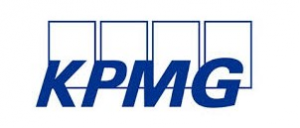Interview with Zbyněk Frolík, Founder of Line
2013-08-29
Zbynek Frolik has become an icon of Czech enterpreneurship. He is a true builder of businesses, and he understands that success depends on how well he can motivate others to align their stories with his. You cannot visit his factory without him pulling you out to see the people and the machines who make his business, and without walking up and down the loading bay reading the dispatch papers to find out to what hospital in what part of the world his beds are being shipped. In a little over ten years, he has willed a cow shed and a contract into a Euro 135 million business active on four continents and employing 900 people.
His story:
“In the Communist days, the Academy of Science had a Russian 1033/1045 computer, which was a copy of the IBM 360/370. It did not work so well. My job was to fix it, and I spent four days a week trying to make it do what it was supposed to do. Sometimes, I just could not figure out how to repair it. In that case, I would call four Russian technicians who lived in Prague, but had come from the plant where they made the computers. They could find the problem in five minutes. That made it clear to me that I was probably not the right person to spend my life fixing computers.
“To thank these Russians, I would invite them out to drink vodka. One night, I asked them what they did in their spare time. They told me they found old cars, repaired them, and then sold them in Russia for a very nice profit. So I started finding old cars for them, and I made a place for them to repair the cars in a building out behind the computer center. That way, they had a space to do their work, and, if we had a problem with the computer, they would jump over and fix it. From that time on, we probably had the best performing computer center in the country.”
“Now that everything worked so well, we technicians had to find something else to do with our time. Since it was hard to get radios, several of us decided we would make receivers. Mine looked just like a very nice Japanese radio, but it never played. Because I did not have the right knowledge to do it. It was another message that I needed to find something else to do.
“My father was a director of an agriculture company, and he recommended that I get into cut flowers. I used my IT background to set up a system to regulate the heating, and, because my wife was a chemist, we decided to grow the flowers using hydropony, a very modern technology we discovered after reading some articles about how they grew flowers in Holland. We went to the Institute of Agriculture in Pruhonice, and worked with them to build the first greenhouse using hydropony in the Czech Republic. In two years time, we set the world record by growing 27,000 roses on 100 square meters of planting space. In six years, we were able to grow 400,000 cut flowers.
I needed a place to sell all those flowers, so I rented places in the Metro, in the Muzeum, Mustek, and Andel, which, at that time, it was called Moskevska. My activities attracted the attention of the state police, because I did not conform to Communist habits. They called me in and interrogated me for four hours, but they could not find anything legally wrong with what I was doing. Finally, they told me that if I would give them flowers when they needed them for birthdays or other occasions, they would help me with travel visas. So every time I needed to go to Holand, or France, or Italy, I would get the visa within two weeks.
The Birth of Linet
Before 1989, I worked as the technical director of the new blue pavilion at the Motol Hospital in Prague. At the time, Motol desired to be the best hospital in Eastern Europe, so it bought some of the most advanced equipment from Western Europe. This gave me an opportunity to travel to other hospitals in France, Sweden, Italy and Germany. I saw the differences between the equipment we had here and what was there. And, because I had the permission to travel, I could exchange Czech currency into other currencies. That is how I built up the capital I needed to start Linet.
It was not just capital I got from the flower business. I learned how to manage people, and to administer a private business. That all became very useful in the early days of Linet, because I had already had experience in just about the only business in the communist system in which market principles could be utilized.
I decided to set up a business making hospital beds, because it seemed a fairly easy thing to bend some tubes, put four wheels on the tubes, and then add some adjusters. I knew that there would be a market for it, because I knew that our hospitals would need to upgrade the types of bed they were using.
I knew I could make better beds than the ones in most hospitals, but I had two problems. First, I needed a place to build them. We started visiting all the villages northeast of Prague off the R7 highway, because I lived the suburb of Prague – Suchdol on that side of the city. I would stop in the local pub every Saturday and ask around if anyone had a spare place where I could set up a production shop. That is how we found this cow barn. The first production facility was in the room where they stored the cow feed.
Second, I needed someone to buy the beds. No one was going to buy a bed if they came to visit the cow barn. We needed a way to get people to trust us enough to buy the bed without visiting the production site. The best way to do this was to have a credible partner. For this reason, we gave 50% of the shares in Linet to a German company. They agreed that we would make the decisions, and to be a silent partner. Once we had the partner, no one had any concern about our quality. We received orders for about 1200 beds and no one ever came to see the cow barn.
Establishing the premium
We decided that we could not sell our beds at the same price as the other beds. At that time, the standard price for a bed was around CZK 3000. We priced our beds at CZK 50,000, and gave everyone a 50% discount. People like discounts. Then we developed a story. Our beds cost CZK 8000 to produce, because we were not building the standard bed. Our beds allowed doctors and patients to adjust the position of the bed to make patients more comfortable and doctors to care for the patients more easily. We had to sell these actuators as a way to improve care and reduce injuries. The market accepted this explanation.
For the first ten years, we spent everything we earned to invest again and again and again in new technologies and in learning how to use those technologies and in the space to work with those technologies. We had to keep finding ways to be better and to be different from our competitors.
We learned something new every day in those days. The importance of emotion in business- how it is the center of what makes people buy- was our most important lesson. We had been mainly interested in the technology to make the bed work better, but we now understood that we had to invest in making people want to use the bed just by looking at it. We hired a well-known designer and told him to make nurses like the beds. At the same time, we hired another designer to create a bed that would highlight the technological advances of the bed by making it more compatible with other hospital technologies and by using material that was more high-tech. We then put the two designs together into one bed.
This bed surprised the market. It was our first bed that was competitive in the United States. The US was the critical market for us, because it is about twenty years ahead of the market in Europe in the technology used for medical devices. If we could compete there, we could compete anywhere. It is also a market that is highly developed. Two big players there have consolidated the market over the last hundred years, and have a very strong capacity to invest resources into development. They were so powerful that a local US company did not have the money to develop a rival bed. Outside competitors did not have the connections or the distribution network to scale up quickly enough, and, since other markets were not as technologically competitive, most outside companies did not have a bed that could compete in quality.
Our bed changed that equation. We could provide the quality. This interested medical device companies, such as Draeger- Siemens and Philips, that did not have such a bed in their portfolio. But they did have the sales network in other products. Pretty soon, we had about 50-60 distributors of our product in the World.
This was a familiar approach for us. We had built our position in the European market in a similar way. The European market was more fragmented, and therefore had many small players. One American company had come into the market, and begun consolidating it. They had bought a company in France, in Austria, and in Germany, and had closed all the plants except for the one in France. This scared all the other players. I think this company had underestimated the number of family companies still in the market. These family companies would not just sell and let the business be closed down. It was their family business and they would spend every last piece of money they had to keep the business running. This gave us a chance.
We would go to the number two player in every market and offer to them to become a member of a consortium. We could all concentrate on one product, and build quantity by offering across all of our markets. The management of the companies were interested. They saw the potential of the product, and they could very quickly calculate how this could affect their bonuses. When they took the proposition to the owners, however, it ran into problems. It was still a little too close to the fall of the Wall, and the owners did not want to have anything to do with an “Eastern” company. They were concerned about quality, and other risks. It was just too soon for this sort of consortium to work. What happened, however, is that many managers saw such a big potential and had such a great interest that they urged us to set up a subsidiary in their country, and then joined us. This gave us the connections we needed to start building up our business across Europe.
Today, all of these subsidiaries- which now includes the German company which we gave 50% of our shares- are incorporated in Holland. I run it as the CEO. I want to keep everything under my control. I still hold 33%. The German family that owned our first German partner has about 17 members who hold ca 3% each.
I have it now as an economic sport: we are trying to achieve or beat some goals. Our goal is to reach sales of 250 million euros and 45 million euros in EBITDA.
The transition from entrepreneur to corporate boss
It has been a very nice experience to move a company from a garage to a corporate structure, especially a production company. Managing ten people is totally different than managing 100, or 500, or a 1000, and managing a group of people in one country is completely different than managing a group of people split between two or more countries. The problem is always time. The first thing is always to find people who are better than you, particularly in details of the operation. Then, you train them to take over the responsibility of those operations. And you have to train yourself to turn your attention away from those details, and to be the one who can set the main direction and then perform as a sort of internal auditor that can test to see if things are going in that direction. I need to be the one that collects and considers all the feedback from our customers and from our employees to see if we continue to be an object of desire. Only if we keep that status will we keep making a profit.
Choosing People
The risk many entrepreneurs face as their company grows is that they want everybody to think and act like they do. Do I want people to be like me? Maybe yes. Maybe no. The biggest art in life is the ability to use your best features, because everybody has something that they do better than most other people. You just need to be open enough with yourself to find out what it is that is your best feature. When I was young, I acted and thought differently than many others, and it caused me some problems, because you can be pushed to the side if you are “outside normal”. Then I went to university, and I learned about psychology and the SWOT analysis for the first time. So, I did a sort of SWOT analysis of myself, and discovered that I had strong analytical thinking, and a great interest in anything technical. From my experience in childhood, I had developed a good ability to assess what other people thought of what I said or did. This had helped me develop good communication skills. Later on, I learned that this ability to persuade others is the basic foundation of leadership. So, now, when I choose people, I try to understand what their best capabilities are, and whether they can grow along with the company, and whether they want to, because some people are not able or not willing to go beyond a certain point. That is nothing against them, and does not mean we do not need them in the company. It just means you need to have different expectations for different people.
Beyond Linet
I will be 60 soon. I have been preparing a new group of leaders for Linet, and one of my goals is to get them into a strong position in society so that they can succeed.
Linet still has room to grow. We have to develop our business in after-sales services, in leasing, and in many markets around the world. We have so much homework in front of us that we are not even considering moving into other product lines.
My job is my hobby. If your job is your hobby, you do not have a problem to work thirteen or fourteen hours a day. It is not my wife’s hobby, however. I need to respect my responsibilities to my family. That means setting some limits on the time you spend in the business, and adjusting how, and when, you work to be fair to the family.
If you have been working this way for your entire life, it is not so easy to stop doing it. I do not know many people who have put so much into their business who have been able to walk away. After one year, they usually need to start a new business. That is why we have not sold the business even though we have gotten many good offers.
Those offers also did not make much business sense for me. If you have a company that earns a 30% return on investment year after year after year, do you really want to sell it and invest the money into the stock market? And it is not just the money. Linet is my child. Should I sell my shares in Linet, and then buy some other children? Then I would have more children to look after, and I would need to have invest more time in business. Some other entrepreneurs are able to do it. I just do not think I can. I am not able to be joined with the money only. I need to be joined with the people in the business. That is what business is for me: a human story. Some others are able to buy and sell the human stories without ever getting too involved with the humans who made the story. I cannot. I have to be near and to be in touch with the people.







